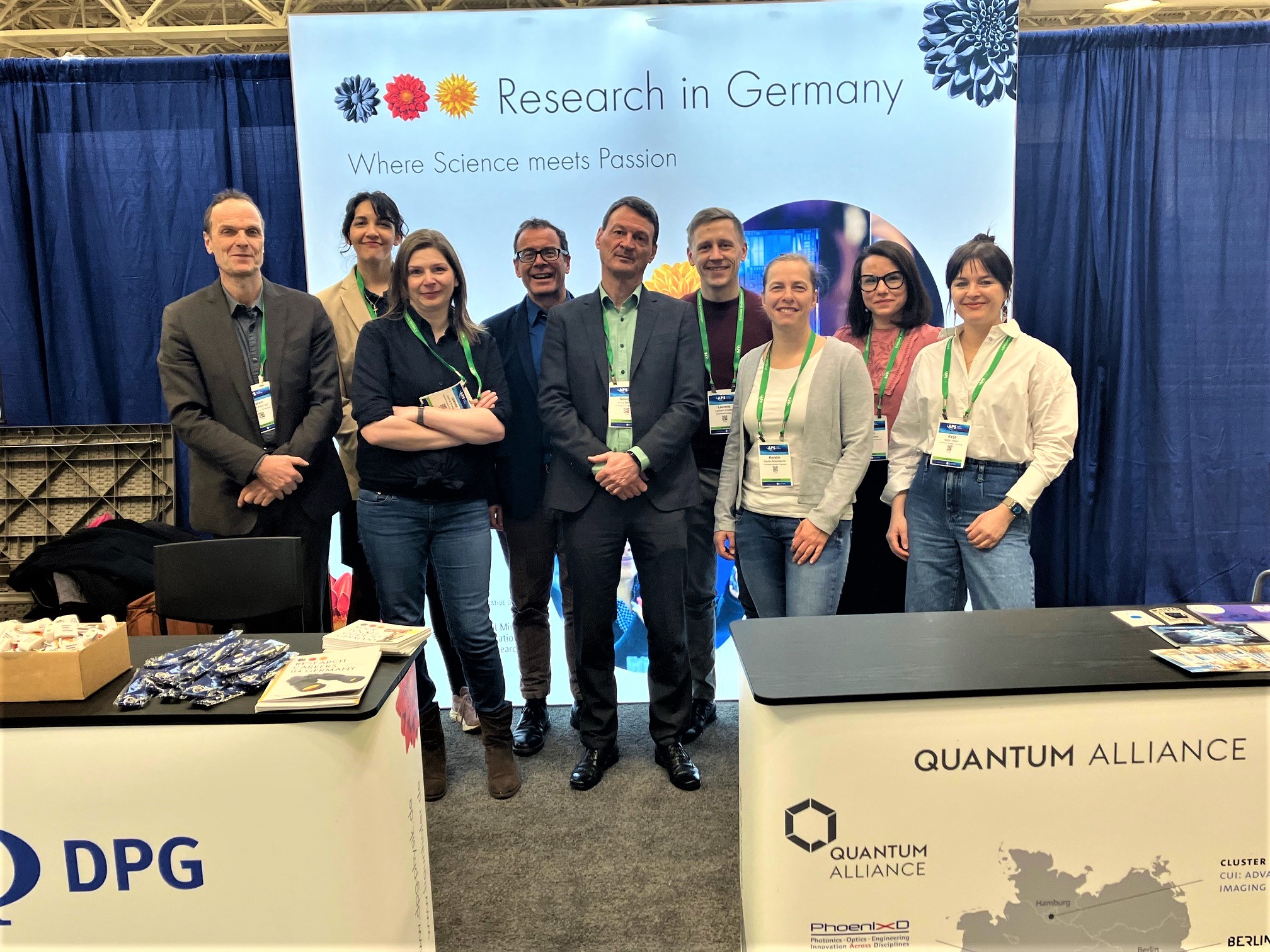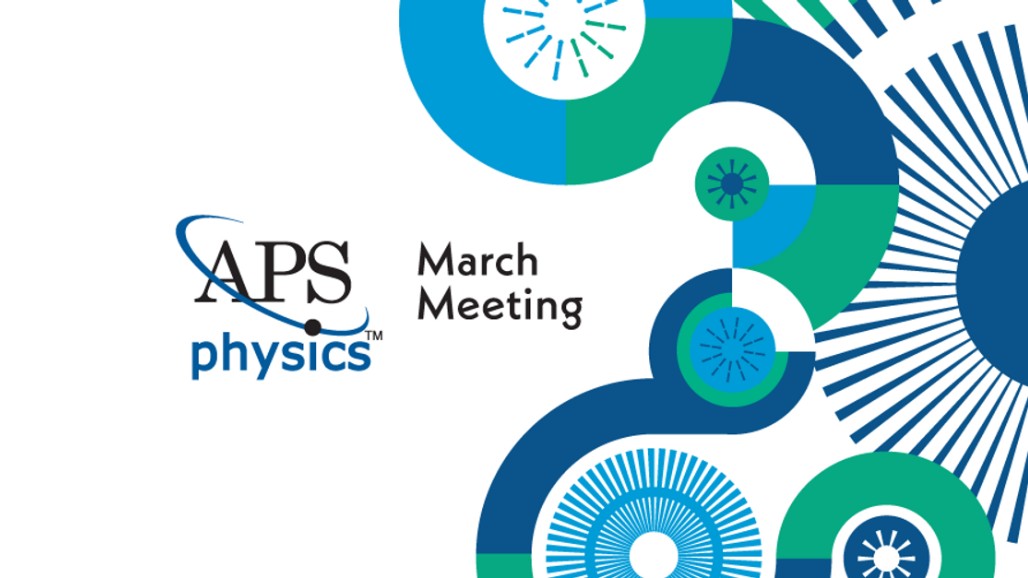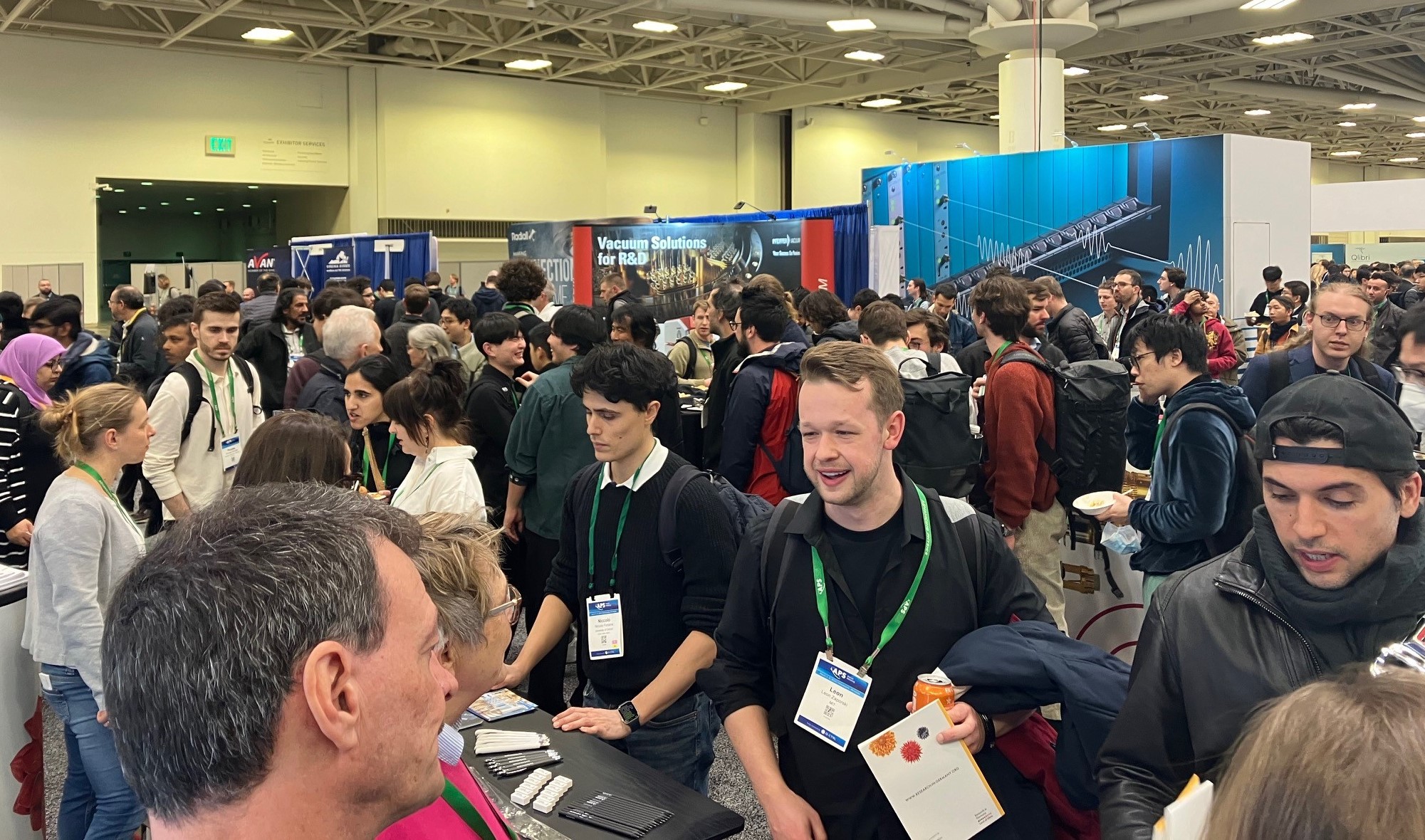Promoting Germany as a research location in Minneapolis: Quantum Alliance, DPG, DWIH and DFG at the March Meeting of the APS

DFG Office North America at the March Meeting of the APS: The team

The Research in Germany team, l-r: Stefan Altevogt, DFG; Sebrena Geier, American Friends of AvH; Joanna Kowalska, DFG; Peter Kerrigan, DAAD USA; Georg Bechtold, DFG; Laurenz Kötter, TU Braunschweig; Dr. Kerstin Brankatschk, TU Dresden; Anca Ionescu, LMU Munich; Katja Lesser, TU Dresden.
© DFG
The Research in Germany team, l-r: Stefan Altevogt, DFG; Sebrena Geier, American Friends of AvH; Joanna Kowalska, DFG; Peter Kerrigan, DAAD USA; Georg Bechtold, DFG; Laurenz Kötter, TU Braunschweig; Dr. Kerstin Brankatschk, TU Dresden; Anca Ionescu, LMU Munich; Katja Lesser, TU Dresden.
© DFG
The March Meeting of the American Physical Society (APS), which has reached 13,000 participants again since the pandemic, continues to be a special mix of researchers with a Faustian interest in knowledge and more application-oriented "techies" who both build equipment for researchers and transform research results into new technologies. Both sides of this innovation process are of fundamental importance for knowledge-based acquisition companies and both sides are the target groups for promoting Germany as a research location, or more precisely for promoting "Physics in Germany".

The range of information on offer at the stand organized by the DFG's North America office was correspondingly broad. It ranged from expert advice from members of the German Physical Society to general information on career and funding opportunities for physicists in Germany to news from the Quantum Alliance, a network of DFG-funded clusters at the forefront of research in quantum technologies. Quantum technology has been the dominant theme of APS conferences for a number of years; a large leap of faith from venture capitalists has made the trade fair correspondingly more elaborate over the past few years, and many exhibitors have incorporated a "Q" somewhere in their corporate identity or service catalog.
In order to spread an understanding of what the strange quantum world is all about, vegan rubber kittens were distributed with great success at the joint "Physics in Germany" booth by the Quantum Alliance. They had to be vegan because there is a QR code on the packaging and behind the QR code is probably the best-known cat among physicists -- Erwin Schrödinger's hypothetical cat.
In the quantum adventure game developed by app designer Philipp Stollenmayer on behalf of and in collaboration with the Cluster of Excellence ct.qma(externer Link) at the Universities of Würzburg and Dresden, her name is Kitty (externer Link) and she is looked after by Anna, the fictional great-granddaughter of the physicist and Nobel Prize winner. Anna helps players to free Cat Q from the crazy quantum world, where everything follows its own rules. Together they can solve puzzles in the incredible field of physics and generate curiosity about what holds the world together at its core. With or without an answer to this question, with or without certainty about the fate of Cat Q, everyone involved in the "Physics in Germany" presentation left Minneapolis after four days of the trade fair with the secure feeling that they had successfully and thoroughly promoted Germany as a cutting-edge location for research and innovation.
First onslaught of conference attendees
© DFG
